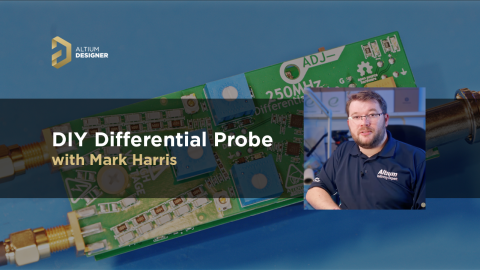New Dimensions of PCB Simulation and Modeling

Judy Warner: What was the technology impetus behind forming Avishtech as a company?
Keshav Amla: The simple answer is that we saw some major pain points in the existing electronics design and development approach, relating to signal integrity, manufacturability and reliability of PCBs. As far as signal integrity, loss modeling was a source of major consternation, but an even bigger cause for concern was the inability to predict manufacturability and reliability issues. Basically, the old way of doing things was to build test vehicle boards over and over with multiple respins to the design. We felt that we were the right people to build the necessary technology to predict real-world behavior at the stackup design stage.
Tarun Amla: Just to add to that – a key point is that one-shoe-fits-all test vehicles don’t work. Each stackup is different and a successful battery of tests on a prototype board really only means that the particular design used on that prototype board will work. People usually think they can build a “worst-case” test vehicle, but there really isn’t such a thing.
Judy Warner: What are the toolsets and services that Avishtech provides?
Tarun Amla: We provide our Gauss line of design and simulation software. Gauss 2D is our 2D electromagnetic field solver and frequency dependent tool for signal integrity simulation of transmission lines, and Gauss Stack is our PCB stackup design and simulation tool for predicting reliability, manufacturability, and signal integrity.
Also, we have now introduced our Gauss Synthesis offering, which allows customers to access the functionality of our tool sets online, on-demand and as-needed, without needing to learn how to use a particular toolset or determine how to interpret the results – simply submit an order with the necessary input data and get a report with your results and expert feedback.


Judy Warner: What differentiates the Gauss toolsets from other EDA vendors’ offerings?
Keshav Amla: Gauss Stack is a fully integrated design and simulation environment for predicting Manufacturability issues, such as glass stop/resin starvation, as well as plated through hole reliability, Microvia reliability, and solder joint reliability. Prior to Gauss Stack, you would only find these problems out many months into the design process, through building test vehicle boards, where you would discover failure, but not have any indication as to how to fix it. Now with Gauss Stack, you can go through this prototyping process and iterate through revisions directly within the software, in hours, rather than months.
A key distinguishing aspect of Gauss 2D relates to ground plane losses. Ground plane losses become quite significant at high frequencies and can be >35% of the conductor loss, but these are not accounted for in competitive toolsets. Gauss 2D is the first and only tool in the market (along with Gauss Stack) to include ground plane losses in its loss modeling, bridging the gap between SI simulation and real-world performance. Another really exciting first-of-its-kind offering within Gauss 2D is our broadband extraction utility, which allows a user to extract, directly from a set of S-Parameters, the RMS copper roughness, and the Dk and Df over the full frequency range.
With Gauss Synthesis, we also offer additional flexibility to our customers to access the power of our toolsets – through annual licenses or through an on-demand, white-glove approach – whatever best suits their particular needs.

Judy Warner: What are the specific design challenges and pain points that Avishtech’s toolsets and services address?
Tarun Amla: Gauss Stack serves to allow a user to create a right-the-first-time design by providing a simulation environment that predicts long-term reliability and catches failure modes at the stackup design stage. Gauss Stack can replace reliability test vehicles, allowing our customers to save money and go to market with better designs more quickly.
Gauss 2D provides users with that deep granularity and extreme accuracy needed to properly characterize transmission line behavior through simulation, rather than signal integrity test vehicles (SITVs). Because it accurately simulates impedance, RLGC, and, most critically, unlike any other tool, Gauss 2D can effectively replace SITVs.
Gauss Synthesis enables those companies that don’t require a full-on subscription to our toolsets to take advantage of the capabilities provided within them. We also offer our customers additional value-add services such as dimensional stability simulations and design to requirement services without requiring them to purchase a complete annual subscription or run the toolsets themselves.
Judy Warner: Why are these challenges and factors so critical at this point in time?
Keshav Amla: Today’s high data rate products including 112 Gbps/channel and 5G/mm wave applications have very little wiggle room. Not only this, but many of these designs require balancing many different goals. For example, for many 5G boards, hybrid constructions may be required, which bring a whole litany of issues that necessitate tools like ours. Seemingly innocuous differences can be the difference between a board that works and one that cannot even be built and, because of these limited margins and sometimes conflicting goals, designers are running up against these problems more often.
Judy Warner: What are the business and economic factors that are addressed through Avishtech’s toolsets and services?
Tarun Amla: Our toolsets support the manufacturability, reliability, competitive advantages, and overall profitability of the end products designed with them. With the simulation capabilities that our toolsets deliver, companies can avoid the costly respins resulting from designs that aren’t quite right or don’t perform as they should. Worse still are field failures, which can have a devastating and long-lasting impact not only on profit, but on reputation, as well.
With the Gauss line of products, we minimize risk and greatly reduce time-to-market, which can present a significant competitive advantage to our customers.
Judy Warner: What level of skill set is required to use Avishtech’s toolsets and services?
Keshav Amla: We have put considerable time and energy in making our tools easy to learn and use. This ease-of-use has been a central part of our development for all our offerings, so there is virtually no learning curve.
Editor's Note: To learn more about Gauss 2D and Gauss Stack please visit www.avishtech.com










